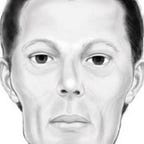The easiest thing to assume is that you know yourself better than anyone because you are yourself. In many cases, this isn’t true. Clearly a two year old does not know themselves better than their parents do. A two year old will only know that they are upset, but not why. The parents are the ones who have to figure out whether the two-year old is hunger, thirsty, tired, or something else.
You can think of yourself as black box that takes inputs and produces outputs but whose inner workings are a complete mystery to you. Your identity is your mental model of the black box. Self discovery is the process of feeding various inputs into the black box and observing the outputs (i.e. seeing how react to / handle different situations). The more unique input-output pairs you collect, the better your mental model of the black box becomes. In other words, the more circumstances you expose yourself to, the better developed your identity will become.
What’s the purpose of refining this mental model? To help you make predictions, plans and decisions. The better you understand yourself, the better able you are to make decisions and plans that will benefit you in the future.
In the self discovery process, you are both the actor and the observer. As you observe yourself acting in and reacting to a variety of circumstances, you will start to notice patterns of behavior. These patterns are commonly called your “personality”, “tendencies”, and “preferences”. There are two obstacles in this otherwise straightforward process. The first is collecting information and identifying patterns as objectively as possible. You aren’t an unbiased observer. Since the actor and observer live in the same person, it’s only natural that both influence each other. The key here is to use outside indicators along with your personal observations to come up with an accurate idea of what you’re looking at (see: triangulation). The second is exposing yourself to a variety of circumstances. It’s easy to get trapped in a bubble with other people who share your worldview. Every once in a while it’s beneficial to go exploring.
This would be simple if you were a static entity, if the black box never changed. The problem is that every situation you encounter changes you, so not only will every situation give you an input-output data pair, it will also modify the black box itself. In practice, this mean that you not only need to track the patterns in the data you collect but also account for the fact that the thing you are trying to model is actually changing over time. When it comes to identity, all measurements have side effects.
Self shaping is the process of changing yourself by changing the way you act or react. A literal example would be exercising more to lose weight. A more abstract example would involve building habits through consistent activity or reconditioning yourself to react differently to stressful situations. In the process of self-shaping, you do get the chance to observe yourself every time you do the activity in question. The trend(s) you notice in these observations help you modify your approach, if needed, or affirm that you are headed in the correct direction.
Closing thoughts:
- The older the data point, the more it needs to be discounted. This is to account for the fact that you change with every situation you encounter, so data points in the past are less likely to be representative of who you are today.
- Self discovery and self shaping are complementary processes. Self discovery is measurement-oriented while self-shaping is activity-oriented. However, in the process of self-discovery, you are being shaped, and in the process of self-shaping, you are discovering yourself.
- Both processes can be induced passively or conduced actively. Your environment can induce self discovery by exposing you to new situations or you can actively seek out new situations. Your environment can also induce you into a pattern of activity that shapes you or you can actively modify your patterns of behavior in order to shape yourself. In reality, the passive and active methods follow each other. You can actively shape or change your environment in a way that induces behavior or exposure to situations. Your environment also has a large influence in what situations you choose to expose yourself to (self-discovery) or what behaviors you decide to change (self-shaping).
Related:
